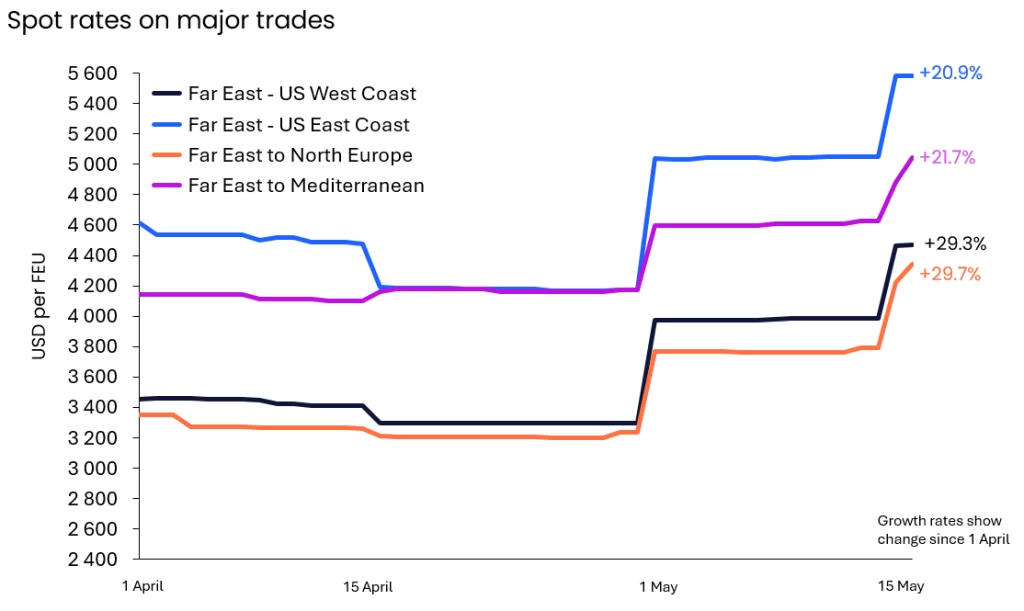As we navigate through 2024, the global shipping industry has encountered a notable surge in freight rates across several major trading routes, signalling an early onset of what appears to be an unusually early peak season. Since the start of May, container spot rates have risen sharply, with the most pronounced increases seen from the Far East to North Europe, where rates have escalated by 30% since April 1st, reaching $4,343 per FEU by mid-May. This is a stark increase of 198% compared to the same period last year. Similar trends are evident on other routes, including the Far East to US West Coast, Mediterranean, and US East Coast, where rates have risen substantially, reflecting more than double the figures from a year ago. These fluctuations in prices can be associated with key events that both directly, and indirectly impact shipping routes.

Geopolitical Tensions in the Red Sea
A key factor driving the recent surge in shipping costs is the increasing geopolitical instability around the Red Sea. Heightened regional conflicts, including Houthi attacks, have necessitated the rerouting of shipping vessels to longer and safer alternative paths. These diversions not only extend transit times but also increase fuel consumption and operational costs, significantly affecting overall shipping expenses.
Impact of US Sanctions on Chinese Imports
Further complicating global shipping dynamics are the US sanctions on Chinese imports. These sanctions have led to disruptions in trade flows and adjustments in global supply chains, contributing to the volatility of shipping rates. The restrictions force companies to seek alternative sources and routes, adding layers of complexity and cost to maritime logistics.
Adapting to Market Pressures
In response to ongoing disruptions and increased operational challenges, the market has seen a strategic shift. Many importers and exporters are increasingly turning to air freight as an alternative to avoid maritime delays. This trend is evident, particularly on transpacific routes to North America, where recent weeks have seen a marked increase in air freight usage due to its relative speed and reliability despite higher costs.
Economic Shifts Influencing Freight Rates
The shipping sector is also feeling the impact of broader economic factors such as inflation and shifts in consumer behaviour. These dynamics are reshaping global trade patterns and intensifying logistical demands, leading to a general increase in operational costs across the logistics sector. As businesses adjust to these economic conditions, the ripple effects continue to influence freight rates and transportation strategies.
This analysis details the significant rise in shipping costs over the past year, influenced by a combination of geopolitical instability, regulatory changes, and economic factors. The increase in maritime routing costs due to conflicts in the Red Sea and the impact of US sanctions on Chinese imports have forced industry-wide shifts to more expensive but quicker air freight alternatives. These developments point to a pressing need for the shipping industry to develop robust strategies that enhance resilience and adaptability in navigating an increasingly complex global trade environment.
Sources:
